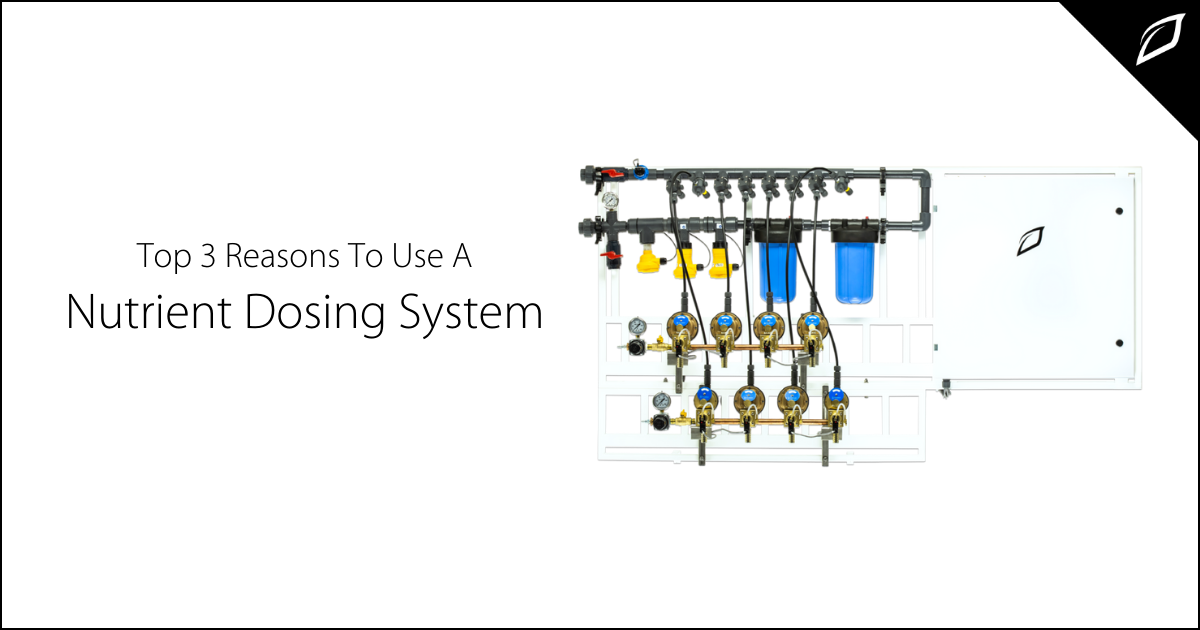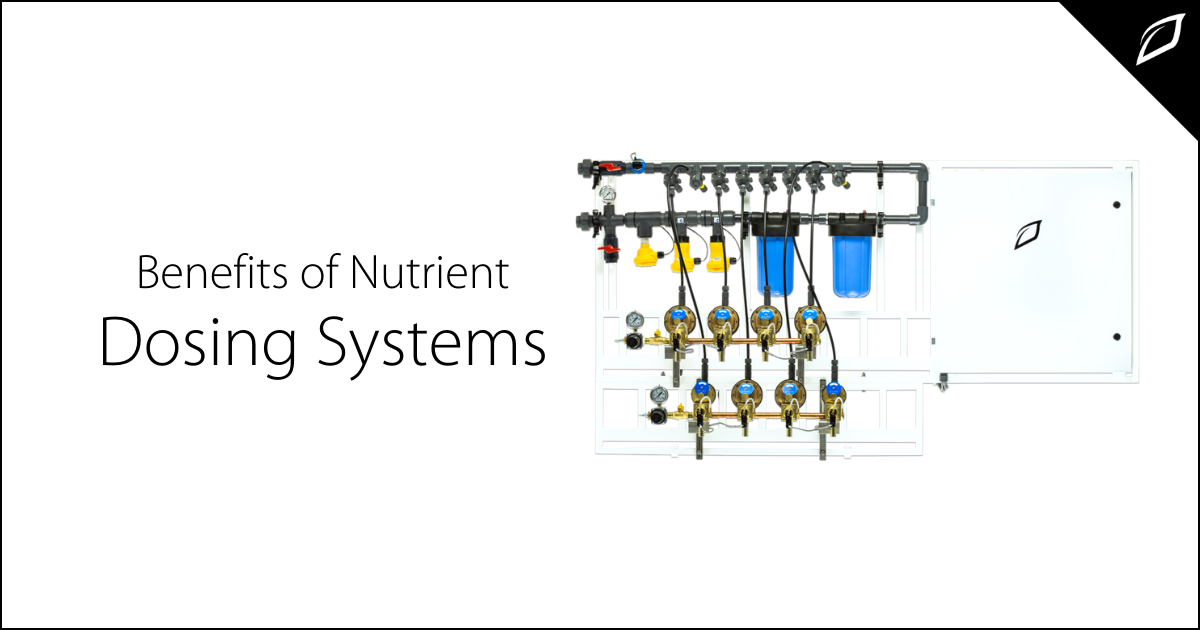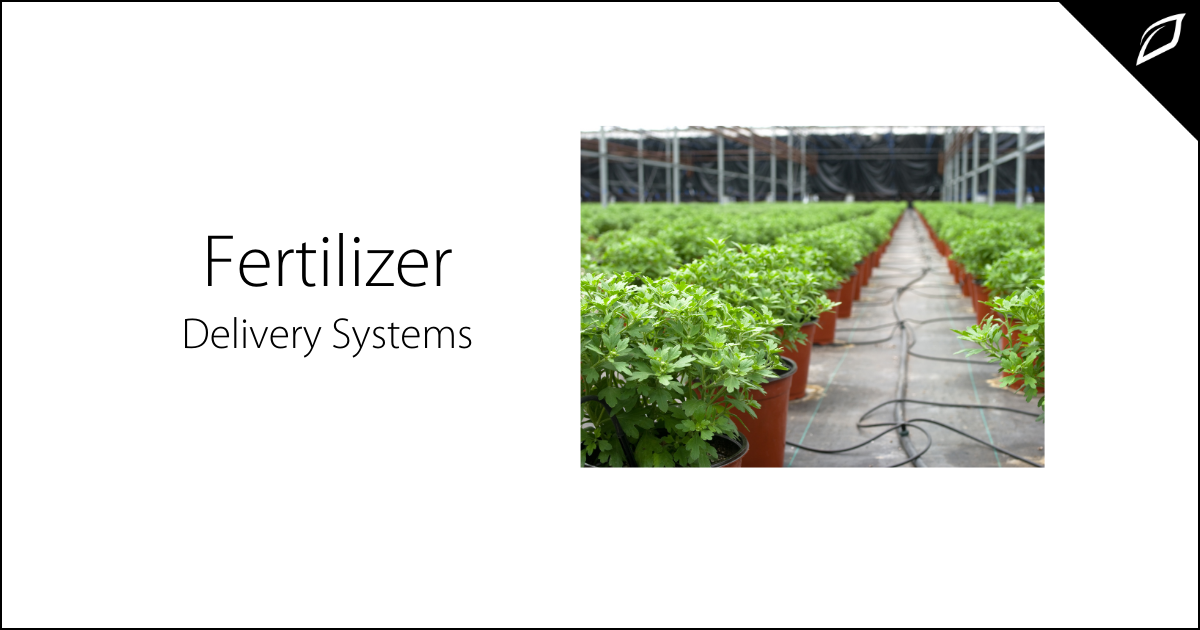Benefits of Nutrient Dosing Systems
Automated nutrient delivery systems can be expensive, and sticker shock can intimidate growers into putting off the upgrade. However, the vast...

Nutrient dosing or delivery systems are associated with precision irrigation, automation, and convenience, but it's also known for high upfront costs. Sticker shock can frighten growers into putting off buying the equipment, even though most growers admit that the upfront investment eventually pays off. Reduced resource waste, lower labor requirements, and saving time are just a few of the things that convince growers to invest in their cultivation facilities' future. Let's examine what nutrient or fertilizer delivery systems do and why using one may be more beneficial than you think.
What is a nutrient dosing system?
Commonly referred to as fertigation, a nutrient-dosing system injects water-soluble fertilizers and other solutions into an irrigation line. In addition to providing plants the nutrients they need, high-quality systems can also measure EC and pH levels.
How it works.
Using a sophisticated series of sensors, these systems monitor EC and pH levels in the water. Exceptional systems can be reached using a mobile app to generate parameters, set rules, and build room-specific recipes in real-time. In response to the rules you create, batch tanks are filled by pumps or feed plants for a calculated duration. Advanced systems are connected via software for constant feedback to improve yields consistently.
Top 3 Reasons To Invest in Fertigation
Final Thoughts
As improvements in indoor agriculture advance, the number of growers applying these profit-producing systems will only continue to increase.


Automated nutrient delivery systems can be expensive, and sticker shock can intimidate growers into putting off the upgrade. However, the vast...

Whether in a commercial grow or an at-home garden, all plants require nutrients or fertilizers to thrive. Automated commercial fertilizer delivery...

The US cannabis industry has become one of the fastest growing markets, with an overall increase in sales of 29.9 billion USD from 2015-2022. This...